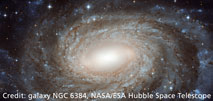Earliest gamma-ray burst discovered
Gamma-ray bursts (GRBs) serve as a unique tool to study the first galaxies. Due to their extreme brightness they can be seen even at extreme distances. Hence, they function as glow-worms that briefly turns on and reveals the position of the explosion site of a massive star far away.

Discovery images of the GRB 090429B afterglow
Astronomers at DARK have contributed to the discovery of a gamma-ray burst (GRB) that occurred only about 500 million years after the Big Bang. Analysis of the GRB from the 29th of April 2009, recently accepted for publication in the Astrophysical Journal, show that this explosion occurred only about 500 million years of the Big Bang, at a redshift of 9.4. Hence, it is the most distant GRB known to man.
This important discovery shows that GRBs from these early generations of stars appear similar to GRBs that occur later in the history of the Universe, and it pinpoints the location of one of the earliest galaxies formed in Universe known to man.
Observing galaxies
|

